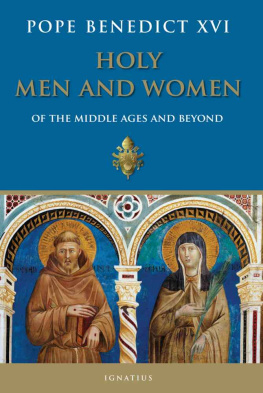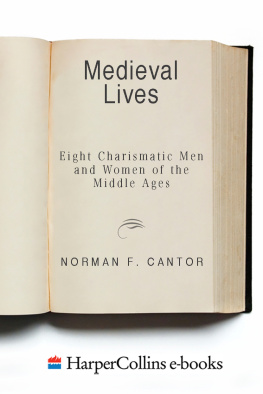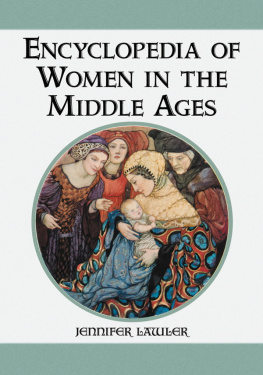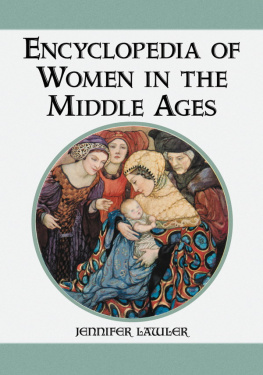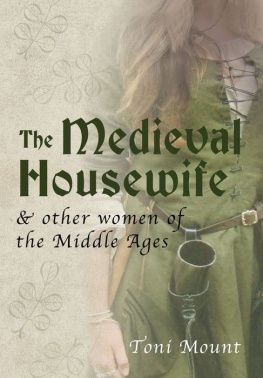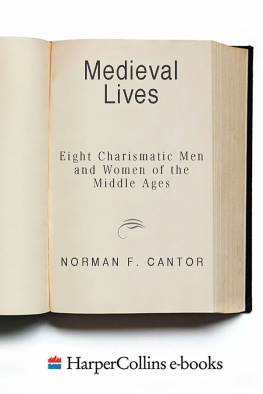Note and Acknowledgements
All Arabic terms have been verified from Lanes Arabic-English Lexicon, which was based principally on medieval dictionaries of classical Arabic. The transliteration is a simplified form of the Encyclopedia of Islam, retaining only the ayn and hamza, and substituting d for dj.
My sources were necessarily selective and make no claim to be definitive. My grateful thanks go to Andr Gaspard for his enthusiasm and belief in this project, to Mai Ghoussoub for her helpful guidance and suggestions, and to Alfred Goldman for reading the manuscript and constructive comments. Finally, I am indebted to Charles Guthrie, without whose understanding and encouragement this work could not have been completed.
Introduction
My aim was to present an alternative vision of Arab women to counter western perceptions distorted by the lens of Orientalism and historical experience. This is an in-depth study of issues affecting womens life in all its dimensions, centred as it was on the patriarchal family unit where the interests of the individual were subordinated to the greater good of the extended family and clan. Arranged marriage, notions of honour and shame, the control of female sexuality and the seclusion of women are difficult and sensitive issues for a non-Arab to explore, and the depth and variety of this field and the diverse geographical locations present a host of problems.
One must ask whether it is possible to posit a model of a unified Muslim society? Within some one hundred years, the Muslim world embraced converts from diverse ethnic strands, who outnumbered the Arabs, but Arabic was the lingua franca of religion and cultural expression. The oldest surviving of the four law schools, that of al-Malik of Medina, was the closest to the lifestyle of the Prophet; it reflected the mores of pastoralists and was predictably conservative. In Iraq, the liberal Hanifi rite was the most influential branch. The two other schools were the Shafii in Cairo and the Hanbali which prevailed elsewhere in the Muslim world. In time, many of the jurists, who were non-Arab, interpreted Quranic prescriptions concerning women in light of their own value systems. Their varying pronouncements reflected accommodation to local custom and practice, thus attitudes to female seclusion, costume, propriety and suchlike varied from country to country.
Women were more socially active when Islam was largely confined to the Arabian Peninsula, but later restrictions were outweighed by womens rights of inheritance, for example, recognised in law. Relations between men and women in the culture of the Near East had been firmly delineated from time immemorial prior to Islam; they were preserved in the countryside but, as canon law evolved, were modified for city life. It is arguable that womens later status was in many ways undermined in the assimilation to the social mores of the converted societies.
This study is restricted largely to Arab women of the eastern Muslim world on several counts. Orientalism and the splendours of the art of Iran and the Ottomans have inspired studies of women in these areas. Arab manuscript painting is much less well known. I have previously drawn on extensive examination of thirteenth- and fourteenth-century illustrated Maqamat manuscripts from Iraq, which provided a rich source of information on contemporary social life; where relevant, they are referred to as visual evidence. Arabic is a difficult language and it is one aspect frequently neglected by western commentators. Language is the key to people and society, and access to medieval dictionaries revealed much valuable supplementary material.
My sources were wide and drawn from the world of learning - the religious and political elite - and include the tenth-century geographer al-Muqaddasi and Ibn Khallikans thirteenth biographical dictionary. The harangues of Ibn al-Hajj came from fourteenth-century Cairo, a bastion of Maliki orthodoxy frequently undermined by womens public behaviour. Al-Maqrizis fifteenth century history of Egypt was also highly informative. But these were men who wrote for a highly-literate male bourgeois audience representing a social order based on the superior power of men and little concerned with the needs and aspirations of common people. Their often-negative views, and those of theologians, were redressed to some extent by chroniclers such as al-Jahiz, a man of letters and satirist and the judge al-Tanukhi, who compiled anecdotage. They were keen observers of social life in all its nuances, and they cast a refreshing, human slant upon the habits and characteristics of their time.
Although women were largely excluded from the political process, pious women, compilers and transmitters of hadith, made their mark and were highly respected. The Prophets wives and others in the early community were frequently mentioned and exemplars for women everywhere. The philosopher al-Ghazali expressed strong views on sexuality in the eleventh century; while many of these addressed the perceived needs of men, there nevertheless seemed to be some understanding of the female condition. Ibn Battutas reports from foreign lands were useful in highlighting divergent lifestyles from the Islamic norm. Al-Sakhawis fifteenth-century biographical dictionary, The Brilliant Light (Al-daw al-lami) contained entries for many women famous for their piety and learning, but it is striking that, while the careers of their sons are worthy of mention, their daughters were referred to only by name. On a lighter note, Arab proverbs and folk tales, Ibn Daniyals shadow plays and The One Thousand and One Nights threw light on the common people, while medical and pharmaceutical records demonstrated that women were pro-active in the control of their own fertility. Finally, the poetry of Arab women in Iraq and al-Andalus across the centuries lent an authentic voice which transcended town, country or desert and drew them together in common cause
Sources were also chosen to substantiate a suggested ubiquity of experience in the Muslim world. The mosque and ritual prayers, the suq, the hammam, dress for men and women conforming to tradition and religious prescription, cookery recipes (with regional variations) and so forth were all highly visible entities in the urban experience. The material is not definitive, but tends to confirm that a common culture, bound by the Arabic language, did evolve.
It is to be hoped that this work will appeal to a wide audience, provoke further thought and stimulate an increasingly interdisciplinary approach to the study of Arab women, in whatever period. My interest in their lives stems from residence and friendships forged in Bahrain, travel in the Middle East, as well as the inspiration of my Arabic teacher and friend, the late Taha Husayn.
CHAPTER 1
Marriage and the Home
Marriage
Al-Ghazali, acknowledging the benefits to men of marriage, which relieves the mind and heart of the man from the burden of looking after the home, and of being occupied with cooking, sweeping, cleaning utensils and arranging for the necessities of life posited one eleventh-century male viewpoint reflecting the urban bias of traditional Islamic culture. Thus a husband would not find most of his time wasted, and would not be able to devote himself to work and to knowledge. He also conceded that A good woman, capable of setting things to rights in the home, was an invaluable aid to religious holiness. This conservatism reflected his role as the arbiter of Sunni orthodoxy, would have appealed in periods of social dislocation, and was perhaps a response to it. Nevertheless, despite the noblest of all her tasks being to produce and raise children, a womans everyday domestic role was seldom acknowledged in Arabic literature, where women were frequently portrayed as the playthings of men.




